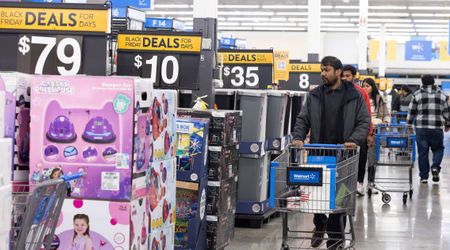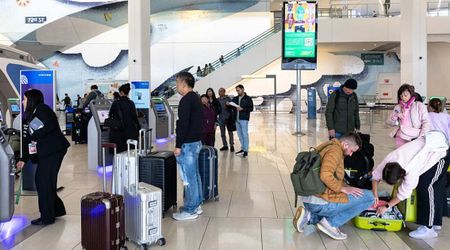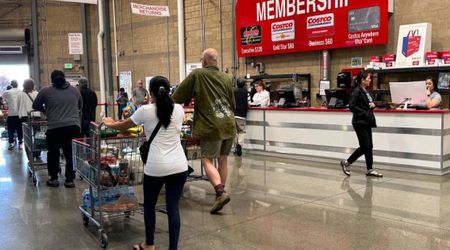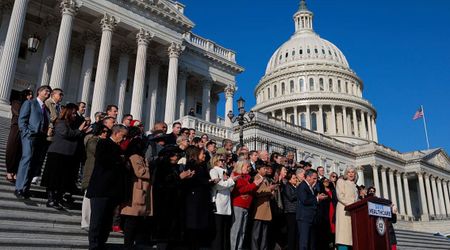From Groceries to Fast Food, Exploring the Surge in Tip Requests and Complexities of Tipping Culture

Grocery stores, self-checkouts, and fast food joints never demanded tips, but now more and more such places are starting to request them. To understand why this change is happening, let's look at why tipping exists and why there's been a rise in requests recently. Sylvia Allegretto, a senior economist at the Center for Economic and Policy Research, who's studied wages and tipping extensively, says it's a complex issue. "Many find it confusing, but it's actually quite crucial" for how certain workers are compensated.
There are some additional considerations to take into account now, even if many experts claim that most tipping conventions haven't altered (for example, feel free to ask if you're unclear about whom or how much to tip).

Increased Tipping Expectations
Expectations around tipping have increased in recent years. According to a Pew Research survey conducted in 2023 among around 12,000 American adults, 72% of participants believe that they are now expected to tip service workers more frequently than in the past. Still, just roughly one-third of them said that figuring out when and how much to tip is "extremely or very easy".
Shubhranshu Singh, professor of marketing at Johns Hopkins University with a focus on business strategy and management, says that to help vital workers, people started tipping more generously and people they wouldn't have tipped before the pandemic.
Modifications in payment technologies also have an impact. Singh points out that businesses like Square, which manage several electronic payment screens, get a cut of every sale, including tips. Therefore, creating software that promotes tipping—especially greater tips—results in higher earnings for these businesses.
Tipping is another way to increase workers' earnings without indirectly increasing their base pay. Professor Sean Jung of Boston University's School of Hospitality Administration notes that this enables eateries to keep competitive pricing while giving their employees extra money.
Understanding Wage Structure
Allegretto clarified that there is a two-tier salary structure in the US. "We have minimum wages and then we have subminimum or cash wages paid to workers who are tipped." The federal minimum wage is currently set at $7.25 per hour, but each state is free to set its minimum pay. The minimum wage in certain states is more than twice that amount.
There is also the concept of a subminimum wage. This is a pay that falls short of the standard minimum wage for certain service workers. The idea is that these employees receive less than the minimum wage, and gratuities from clients help make up the difference so they are paid at least the minimum wage.

Considerations for Tipping
Allegretto advises that it is helpful to research the minimum and subminimum salaries in your state before determining how much to tip. You can get this information with the help of the wage tracker provided by the Economic Policy Institute. Depending on the state, there can be wide variations in how much you tip a server. For example, in Washington, tipping can be viewed differently than in Tennessee because there is no subminimum pay for servers and the minimum wage exceeds $16 per hour. Since the subminimum wage in Tennessee is $2.13, especially if you're only getting pie and coffee, your waiter probably depends on the extra tip you leave.
Which workers obtain a minimum or subminimum pay is often unclear. Subminimum wages are typically paid to car wash employees, bartenders, and servers, although it can be difficult to determine the exact amount. Allegretto acknowledges the system's complexity and points out that it is very difficult for clients to comprehend how much different jobs and states pay their employees.
If you're uncertain about tipping or how much to tip, simply ask the person serving you, advises Singh. He suggests some useful questions:
1. What are the minimum and subminimum wages in your state? Knowing this can help you understand how your tip contributes to the employee's income.
2. Do you receive the full tip amount? Some payment systems, like Square, deduct a portion of the tip, affecting how much goes to the employee.
3. How can I ensure you receive my tip? Confirming this prevents your money from going to unintended recipients. If you're uncomfortable asking these questions, Singh recommends tipping in cash as a direct means of supporting the worker.
Handling Unexpected Tip Requests
Remember to tip individuals who may not have direct interaction with you, such as hotel housekeepers, adds Singh.
Handling unexpected tip requests: If a business unexpectedly asks for a tip, it's your choice whether or not to tip and how much. Singh suggests leaving a 10% tip in such situations, as it may indicate that the workers aren't receiving a minimum wage.
Beware of 'screen pressure': Lastly, watch out for "screen pressure," warns Singh. Some payment systems preset minimum tip options of over 20%. If this is more than you intend to tip, don't feel rushed to select it; take the time to choose the "custom tip" option instead.























